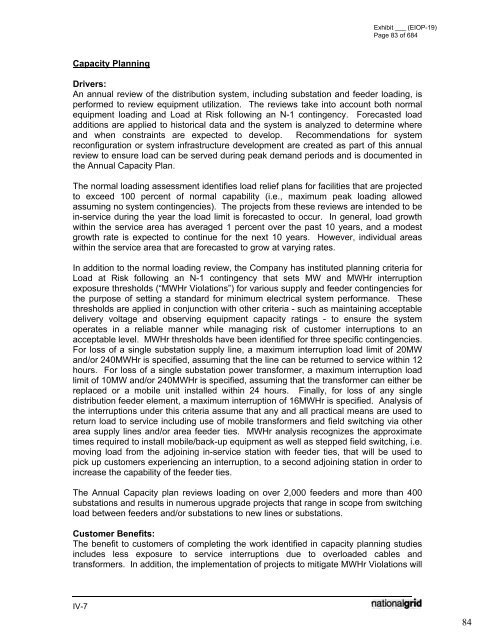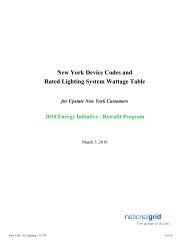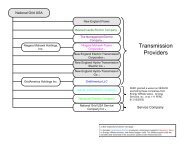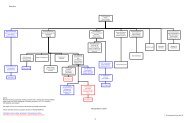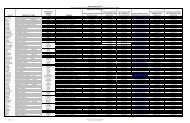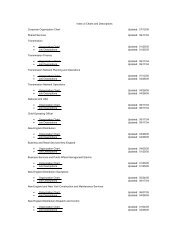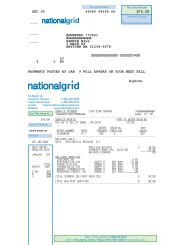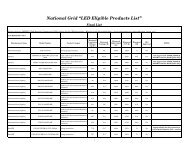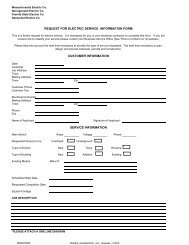January 2012 Capital Investment - National Grid
January 2012 Capital Investment - National Grid
January 2012 Capital Investment - National Grid
You also want an ePaper? Increase the reach of your titles
YUMPU automatically turns print PDFs into web optimized ePapers that Google loves.
Exhibit ___ (EIOP-19)Page 83 of 684Capacity PlanningDrivers:An annual review of the distribution system, including substation and feeder loading, isperformed to review equipment utilization. The reviews take into account both normalequipment loading and Load at Risk following an N-1 contingency. Forecasted loadadditions are applied to historical data and the system is analyzed to determine whereand when constraints are expected to develop. Recommendations for systemreconfiguration or system infrastructure development are created as part of this annualreview to ensure load can be served during peak demand periods and is documented inthe Annual Capacity Plan.The normal loading assessment identifies load relief plans for facilities that are projectedto exceed 100 percent of normal capability (i.e., maximum peak loading allowedassuming no system contingencies). The projects from these reviews are intended to bein-service during the year the load limit is forecasted to occur. In general, load growthwithin the service area has averaged 1 percent over the past 10 years, and a modestgrowth rate is expected to continue for the next 10 years. However, individual areaswithin the service area that are forecasted to grow at varying rates.In addition to the normal loading review, the Company has instituted planning criteria forLoad at Risk following an N-1 contingency that sets MW and MWHr interruptionexposure thresholds (“MWHr Violations”) for various supply and feeder contingencies forthe purpose of setting a standard for minimum electrical system performance. Thesethresholds are applied in conjunction with other criteria - such as maintaining acceptabledelivery voltage and observing equipment capacity ratings - to ensure the systemoperates in a reliable manner while managing risk of customer interruptions to anacceptable level. MWHr thresholds have been identified for three specific contingencies.For loss of a single substation supply line, a maximum interruption load limit of 20MWand/or 240MWHr is specified, assuming that the line can be returned to service within 12hours. For loss of a single substation power transformer, a maximum interruption loadlimit of 10MW and/or 240MWHr is specified, assuming that the transformer can either bereplaced or a mobile unit installed within 24 hours. Finally, for loss of any singledistribution feeder element, a maximum interruption of 16MWHr is specified. Analysis ofthe interruptions under this criteria assume that any and all practical means are used toreturn load to service including use of mobile transformers and field switching via otherarea supply lines and/or area feeder ties. MWHr analysis recognizes the approximatetimes required to install mobile/back-up equipment as well as stepped field switching, i.e.moving load from the adjoining in-service station with feeder ties, that will be used topick up customers experiencing an interruption, to a second adjoining station in order toincrease the capability of the feeder ties.The Annual Capacity plan reviews loading on over 2,000 feeders and more than 400substations and results in numerous upgrade projects that range in scope from switchingload between feeders and/or substations to new lines or substations.Customer Benefits:The benefit to customers of completing the work identified in capacity planning studiesincludes less exposure to service interruptions due to overloaded cables andtransformers. In addition, the implementation of projects to mitigate MWHr Violations willIV-7 784


